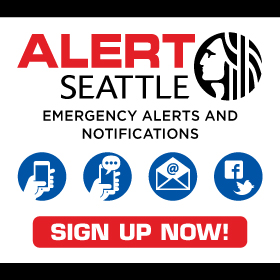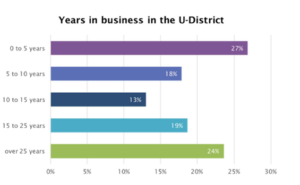Schmitz Park Property Acquisition
On Monday, years of work finally came to fruition. It was December 2015, just a week after my election was certified, and before I took office when I toured Bruce Stotler’s property on the southeast edge of Schmitz Park. I was joined by the Southwest Historical Society and Forterra (a land conservation non-profit). Forterra was interested in helping to preserve the property and potentially purchase it because, at the time, the Parks Department was not.
However, due to the persistence and hard work of many people, the Parks Department became convinced that this was a once in a lifetime opportunity.

The Parks Department will purchase the 5,000-square foot plot for $225,000, which is less than half of its assessed value of $473,000. The funds will come from the 2008 levy which are mainly used to support property acquisition, capital expansion, development, and renovation of Seattle Parks and Parks facilities. The purchase will also use an innovative policy called the “life-estate agreement” which will allow Bruce to remain in his home.
I want to thank Bruce first for his generosity which will positively impact Schmitz Park and the surrounding community for decades. I also want to thank everyone else who helped make Bruce’s dream come true; including former Councilmember Tom Rasmussen, Vicki Schmitz-Block, Nancy Sorensen, Forterra, the Southwest Historical Society, former Parks Superintendent Jesús Aguirre, Chip Nevins with the Parks Department, and my staff Alex Clardy.
New Parking Regulations Coming
Since passing legislation in 2012 the City has not required parking for residential development in urban villages, when the multifamily development is located within 1320 feet (about ¼ mile) from a stop with frequent transit service. You can find maps of urban villages here.
In 2015, the Council passed Ordinance 124608, which specifically requested an analysis of the City’s vehicle and bicycle parking requirements for residential uses, here is the report. I asked several follow up questions to which I received a response in late October, you can see the questions and answers here.
The City is now taking up new neighborhood parking legislation and, among other things, changing its definition of “Frequent Transit Service.” In 2015, I expressed my concern with how the City was implementing the ordinance regarding parking exemptions in frequent transit areas. I sent a letter to the Hearing Examiner supporting an appeal of a project in West Seattle. My specific concern is that if the City averages headways across all routes that pick up at a particular bus stop to determine Frequent Transit Service that doesn’t mean it this stop is providing transportation to where a person wants to go. The concept of Frequent Transit Service is linked to the idea that if a person has a bus near their home that comes often, and goes where they regularly need to go, then they may be less likely to have a car. There are 2 principles to test here. The first is testing the principle that being “more likely to take transit” also means that someone is less likely to have a car that they need to park. The second issue is, will a person be more likely to take transit (and less likely to have a car if principle 1 is true) if one has access to many buses that, on average come every 15 minutes, but the bus that is needed for a daily commute comes less frequently?
At the meeting, this week Council Central Staff reported that the accepted average for the cost of creating below-grade parking is $35,000 per space, plus $300 a month in operational costs. I’m not convinced that reducing the cost to developers to provide these spaces will result in reduced costs for renters and have asked how rental costs differ between developments with and without on-site parking. This kind of data is apparently not available in Seattle.
Additionally, the legislation would uncouple parking costs from rent. This would allow renters the ability to opt out of paying a monthly fee for a parking space. I certainly support finding ways for renters to reduce their living expenses, but I am concerned that the requirement of uncoupling parking costs from rent, without an obligation for a tenant to demonstrate that they do not own a vehicle, may incentivize more people using limited on-street parking spaces.
More information on the proposed legislation is available here, and recommendations from the Mayor to the City Council are available here.
On Wednesday, in Councilmember Johnson’s Planning, Land Use, and Zoning Committee, we had the initial discussion about the legislation the Council will take up. A process was outlined in that committee which includes a Public Hearing that will likely be in February and a potential vote on final legislation in March. You can stay up-to-date by signing up for committee agenda’s here.
Delridge H Line public meetings
In January, King County Metro will be hosting public meetings about the RapidRide H Line, as part of its plans to convert Bus Route 120 to a Rapid Ride line in 2020. There will be three meetings for the route, which travels through Burien, White Center, Westwood Village, Delridge, then on to Downtown:
The meeting in West Seattle will be on Wednesday, January 17, at Youngstown Cultural Arts Center (4408 Delridge Way SW). The format will be an open house with Metro and SDOT from 5-6:30 p.m. Following that at 7 p.m. will be a meeting with the Delridge District Council beginning at 7 p.m., to review and provide input on design elements and implementation. All are welcome.
The two other meetings will be Wednesday, January 10, 5-8 p.m., Burien Community Center, Shorewood Room (147600 6th Avenue SW, Burien), and Thursday, January 11, 5-8 p.m., Mount View Elementary School (10811 12th Avenue SW in White Center).
Metro also has a H Line Online Open House and survey, available here.
The goals of Rapid Ride are:
- Greater frequency and reliability for each commutes downtown and cross-town as well as travel within the neighborhood.
- Additional service on nights and weekend.
- Improvements for sidewalks, street crossings, and paths for getting to stops for pedestrians and bikes, and for those with limited mobility.
More information is available at Metro’s H Ride webpage.
Apply for the Stakeholder Advisory Group for West Seattle and Ballard Light Rail
Sound Transit is seeking community members to serve on the West Seattle and Ballard Link Extensions Stakeholder Advisory Group.
The Stakeholder Advisory Group will provide a forum for community members to inform the development of alternatives for the West Seattle and Ballard light rail projects. Advisory group members will work through project issues and build consensus around key project decisions, highlight specific issues and trade-offs in the corridor, make recommendations to help identify alternatives to study during environmental review, and identify a preferred alternative.
You can apply here. The link includes information about and what they’d like in members (e.g. understanding public transportation; understanding one or more of the affected communities along the corridor; willingness to act as a community ambassador and share information with community members).
The deadline to apply is January 22 at 5 p.m. The Advisory Group will meet monthly beginning in February, through Spring 2019.
Sound Transit’s goal is for the Sound Transit Board to identify a Preferred Alternative in April 2019. Here’s a chart showing where the work of the Stakeholder Advisory Group fits in that timeline. As District 1 representative, I am serving on the Elected Leadership Group, which met for the first time yesterday; here’s a link to materials. The Stakeholder Advisory Group will make recommendations to the Elected Leadership Group; the Elected Leadership Group will make recommendations to the Sound Transit Board of Directors.
Sign Up for Alert Seattle
Please help the Seattle Office of Emergency Management to increase the number of people signed up for Alert Seattle. Their goal is signing up 10,000 more people. You can sign up here.

What is Alert Seattle? Alert Seattle is the official emergency notification system used by the City of Seattle to communicate with city customers and residents during emergencies. The system was launched in August of 2015 and currently there are over 28,000 people signed up to receive alerts via text, email, and phone. While 28,000 is a good start, it represents only about 4% of the total population of the city.
In 2017, Alert Seattle was used on multiple occasions to communicate emergency information to the public, including by the Seattle Fire Department to alert residents of a gas leak, and the Seattle Police Department to alert residents to stay out of an area downtown impacted by ongoing police operations and the pursuit of an armed individual. Each of these notifications reached approximately 25,000 individuals. Increasing the number of people signed up for the system, means more people will have access to this type of important emergency information. In addition to emergency alerts, people signing up can also choose from a menu of community notifications regarding traffic and utility disruptions, severe weather, and emergency preparedness. The system is not only intended for those who live in the city, but also those people from throughout the region that come here on a daily basis for work, school, shopping, entertainment, and other activities.
Mandatory Housing Affordability (MHA) District 1 Open House and Public Comment Opportunities
Last year the Full Council adopted MHA for each the University District, Downtown & South Lake Union; 23rd and Union-Jackson Residential Urban Village, the Chinatown International District and Uptown. The Mandatory Housing Affordability (MHA) program requires all developers in urban villages to contribute to affordable housing by either building it onsite or paying into a City fund for affordable housing. The city plans to develop 6,000 affordable units with the implementation of the MHA program.
This year the City Council will form a Committee of the Whole to review the proposed Mandatory Housing Affordability (MHA) Legislation. This legislation has been in development by the Executive for the last couple years and was finally proposed to the City Council in late 2017. There will be two new opportunities in District 1 to learn more about and give public comment on MHA. First is an open house on Wednesday May 9, 2018 at Louisa Boren K-8 (5950 Delridge Way SW Seattle, WA 98106). The open house will be an opportunity to review the proposed MHA zoning changes for the District 1 urban villages; Admiral, Morgan Junction, South Park, West Seattle Junction, Westwood-Highland Park. Snacks and drinks will be provided and everyone is welcome to attend.
Additionally, the City Council will be hosting a public hearing on MHA in District 1 on Tuesday June 5, 2018 at Chief Sealth High School (2600 SW Thistle St, Seattle, WA 98126). There will also be a citywide public comment session on June 25, 2018 at Seattle City Hall.
You can find the calendar of all Open Houses and Public Hearings here.
University District Small Business Impact Study
On Tuesday December 12, 2017, the Civil Rights, Economic Development and Arts Committee received a briefing on the University District Small Business Impact Study. I was joined by former Councilmember Peter Steinbrueck, Rick McLaughlin of Big Time Brewery, Chris Peterson of Café Allegro and Pamela Jacob of Pam’s Kitchen, Michael Wells of the Office of Economic Development, and Aly Pennucci from Central Staff. Last year, during the discussion of the University District Urban Design Framework and the Mandatory Housing Affordability program in the University District and prior to passage of Ordinance 125267, the bill was amended to delay making any changes to the University District – or “The Ave” to allow more time for the small business owners on “The Ave” to complete this small business impact study and evaluate the impacts of these zoning changes on these businesses.

The study is prefaced with a quote from Jane Jacobs, in her famous book, The Death and Life of Great American Cities, wrote: “The trust of a city street is formed over time from many, many little public sidewalk contacts. It grows out of people stopping by at the bar for a beer, getting advice from the grocer and giving advice to the newsstand man, comparing opinions with other customers at the bakery and nodding hello to the two boys drinking pop on the stoop…”
The study goes on to say how “Small, independent, owner-operated neighborhood businesses such as pubs and cafes, bakeries, pharmacies, galleries, retailers, makers, dance studios, professional services, and nonprofit organizations are what define neighborhood character and authenticity, and the foundation for vibrant, walkable, and sustainable communities.”
I was pleased that among recommendations related to displacement and gentrification, transportation, and zoning and development standards, and business services provided by the Office of Economic Development, the report included support for adopting “best practice anti-displacement measures to protect small businesses, such as San Francisco’s Legacy Business Program.” A Seattle Legacy Business Program is an effort I have been pursuing for the last 2 years now. You can read previous blog post about my work on legacy businesses here, here and here.
You can watch the full presentation and discussion here. The full University District Small Business Vulnerability Study can be found here.

